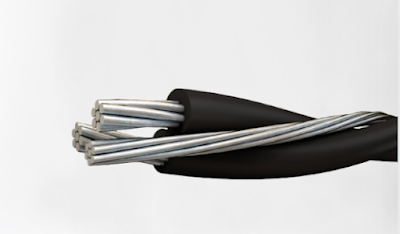MV Cable: Learn the Facts about Medium Voltage Cables
A cable with a voltage between 2,4 kV and 35 kV is referred to as a medium-voltage power cable, and it is utilized inside the power grid to supply and transfer electrical energy.
While being a part of the power system, medium-voltage cables don't really move electricity from one state to the next across the nation. HV (High Voltage) cables on high-voltage power lines are responsible for this.
Residential, commercial, and industrial structures that will eventually get energy from the national high-voltage network are connected to it using intermediate-voltage cables.
Although MV Cable or Medium Voltage Cables might be a component of state medium-voltage networks, private firms also frequently possess them.
Application and uses of medium voltage cable
Medium-voltage cables in a power system are used to deliver electricity to a region.
Since they maintain voltage levels between the high-voltage network and the home installation, medium-voltage cables are not used for national electricity exchange even though they are essential components of a power grid.
The company's own transformer station typically houses the medium-voltage lines for major electrical customers, including industrial businesses, hospitals, huge swimming pools, and radio towers.
There is also a medium voltage line in operation because traction power networks have a grid between 15 and 25 kilovolts.
Due to the increased energy demand, large equipment like cranes or conveyor systems also need medium-voltage connections to supply electricity. Voltage needs to be raised in these huge systems so that a
Design and material used in medium voltage cable
Depending on the exact application, the materials used in medium voltage cables may change; however, they commonly include the following elements, which can be changed according to MV cable manufacturers:
Conductor
The conductor, which is either copper or aluminum, serves as the cable's core. Even though copper is more expensive than aluminum, it is a better conductor.
Insulation
To provide electrical insulation between the conductor and the cable jacket, insulation material is utilized.
Cross-linked polyethylene (XLPE), ethylene propylene rubber (EPR), and tree-retardant cross-linked polyethylene (TR-XLPE) are examples of common insulation materials.
Shielding
Shielding materials are used to shield the cable from electromagnetic interference from the outside and to lessen the cable's electromagnetic emissions.
A metallic layer, like copper or aluminum tape, or a semiconducting layer can both serve as shields.
Jacket
The cable's outermost covering, the cable's jacket, offers both mechanical and environmental resistance.
Usually, high-density polyethylene (HDPE), cross-linked polyethylene (XLPE), or polyvinyl chloride (PVC) are used to create the jacket.
How durable are MV cables?
MV power cables are qualified by various manufacturers to provide a defined life ranging from 20 to 30 years of continued service in optimal environmental and operating circumstances.
Numerous MV power cables used in industrial, electric utility, and commercial settings may be subjected to a range of environmental and operational stressors, such as high temperatures, UV radiation, humidity, submersion in water, and exposure to dust, dirt, and corrosive contaminants.
Conclusion
In order to transport electricity, a medium voltage cable is smoother and better than a low voltage cable. It is widely used in commercial buildings, utility substations, etc.
To ensure the safe and dependable transmission of electricity over long distances while minimizing losses and safeguarding against outside interference, it is essential to choose the right materials from the right MV cable supplier.
Well, Znergy Cable has the best quality electrical cable range, which makes them the best Australian cable manufacturer.




Comments
Post a Comment